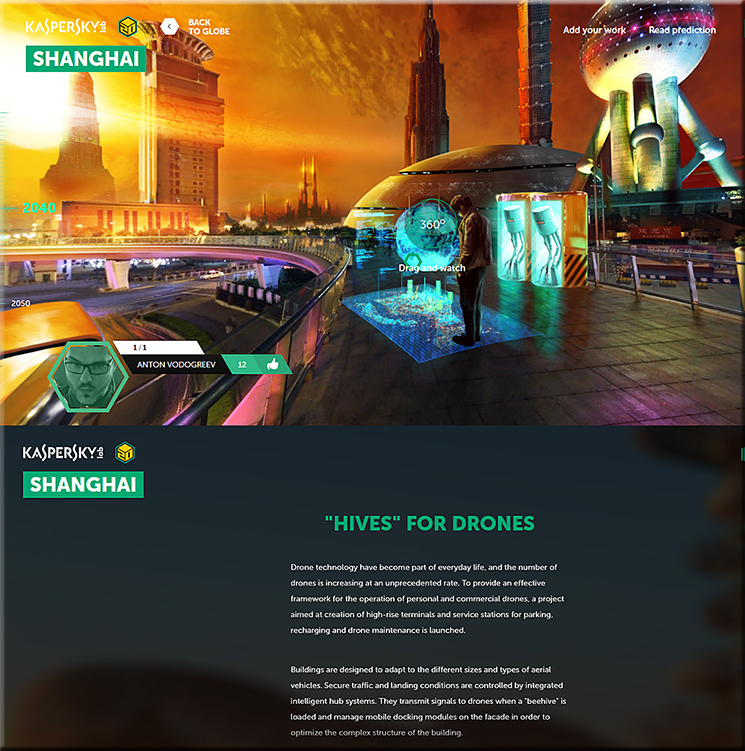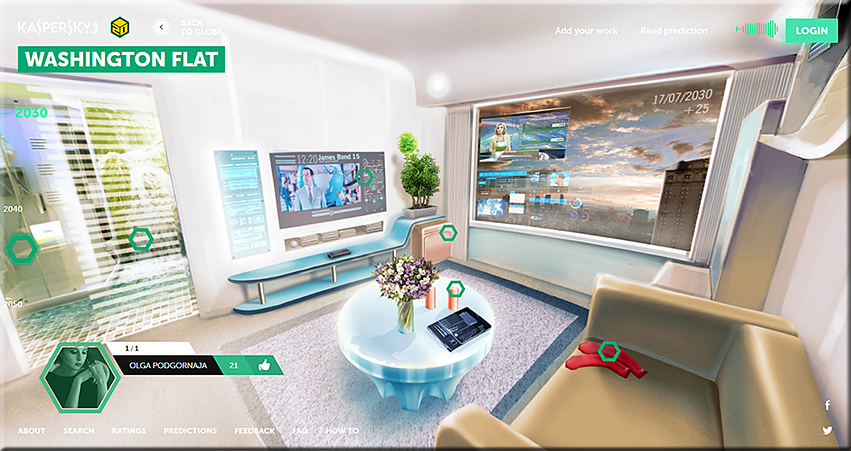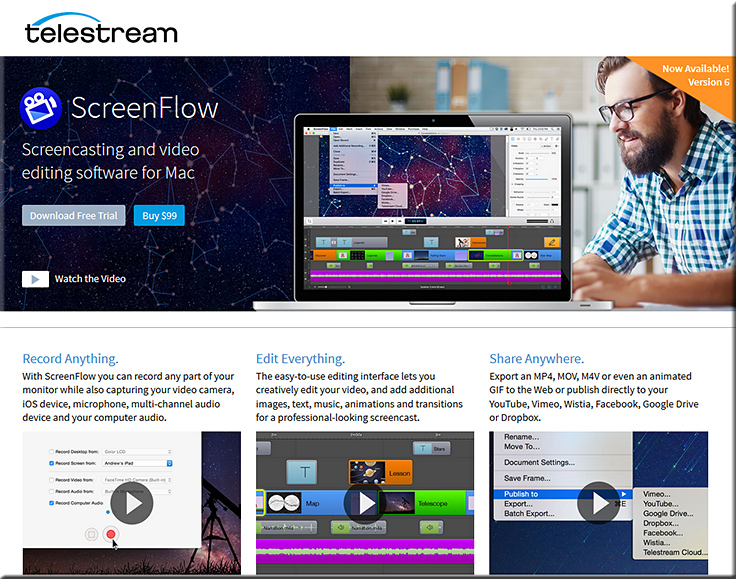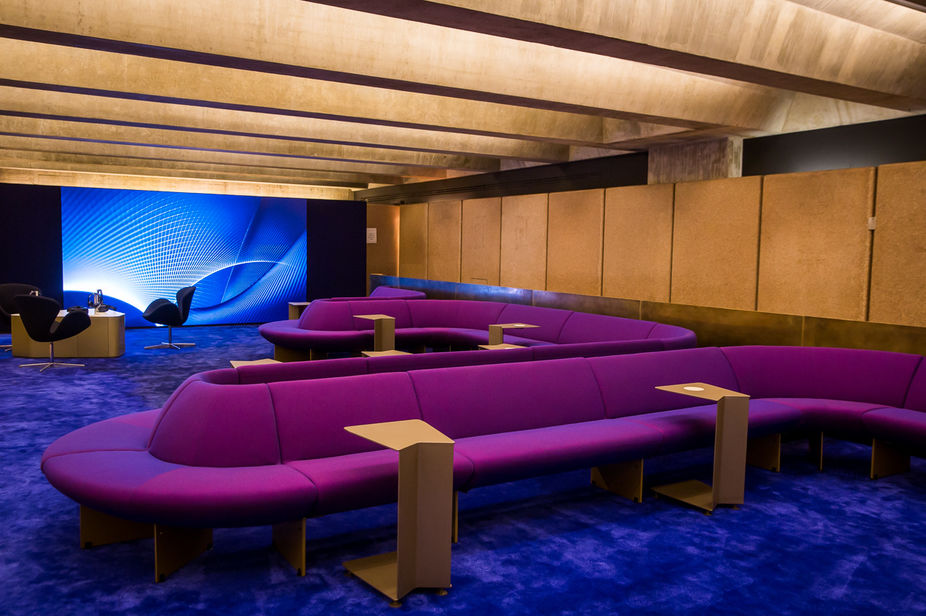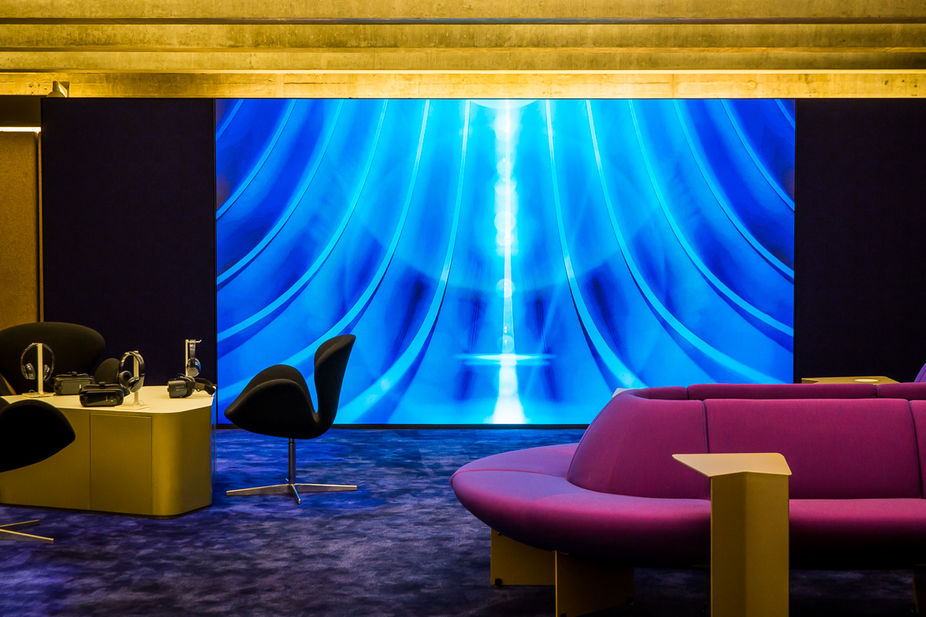Description:
A portrait of the tools and technology that students of the future might encounter.




Description:
A portrait of the tools and technology that students of the future might encounter.
From DSC:
Can you imagine this as a virtual reality or a mixed reality-based app!?! Very cool.
This resource is incredible on multiple levels:
From DSC:
At the Next Generation Learning Spaces Conference, held recently in San Diego, CA, I moderated a panel discussion re: AR, VR, and MR. I started off our panel discussion with some introductory ideas and remarks — meant to make sure that numerous ideas were on the radars at attendees’ organizations. Then Vinay and Carrie did a super job of addressing several topics and questions (Mary was unable to make it that day, as she got stuck in the UK due to transportation-related issues).
That said, I didn’t get a chance to finish the second part of the presentation which I’ve listed below in both 4:3 and 16:9 formats. So I made a recording of these ideas, and I’m relaying it to you in the hopes that it can help you and your organization.
Presentations/recordings:
Audio/video recording (187 MB MP4 file)
Again, I hope you find this information helpful.
Thanks,
Daniel
Key issues in teaching and learning 2017 — from Educause Learning Initiative (ELI)
Excerpt:
Since 2011, ELI has surveyed the higher education teaching and learning community to identify its key issues. The community is wide in scope: we solicit input from all those participating in the support of the teaching and learning mission, including professionals from the IT organization, the center for teaching and learning, the library, and the dean’s and provost’s offices.
IBM to Train 25 Million Africans for Free to Build Workforce — from by Loni Prinsloo
* Tech giant seeking to bring, keep digital jobs in Africa
* Africa to have world’s largest workforce by 2040, IBM projects
Excerpt:
International Business Machines Corp. is ramping up its digital-skills training program to accommodate as many as 25 million Africans in the next five years, looking toward building a future workforce on the continent. The U.S. tech giant plans to make an initial investment of 945 million rand ($70 million) to roll out the training initiative in South Africa…
Also see:
IBM Unveils IT Learning Platform for African Youth — from investopedia.com by Tim Brugger
Excerpt (emphasis DSC):
Responding to concerns that artificial intelligence (A.I.) in the workplace will lead to companies laying off employees and shrinking their work forces, IBM (NYSE: IBM) CEO Ginni Rometty said in an interview with CNBC last month that A.I. wouldn’t replace humans, but rather open the door to “new collar” employment opportunities.
IBM describes new collar jobs as “careers that do not always require a four-year college degree but rather sought-after skills in cybersecurity, data science, artificial intelligence, cloud, and much more.”
In keeping with IBM’s promise to devote time and resources to preparing tomorrow’s new collar workers for those careers, it has announced a new “Digital-Nation Africa” initiative. IBM has committed $70 million to its cloud-based learning platform that will provide free skills development to as many as 25 million young people in Africa over the next five years.
The platform will include online learning opportunities for everything from basic IT skills to advanced training in social engagement, digital privacy, and cyber protection. IBM added that its A.I. computing wonder Watson will be used to analyze data from the online platform, adapt it, and help direct students to appropriate courses, as well as refine the curriculum to better suit specific needs.
From DSC:
That last part, about Watson being used to personalize learning and direct students to appropropriate courses, is one of the elements that I see in the Learning from the Living [Class]Room vision that I’ve been pulse-checking for the last several years. AI/cognitive computing will most assuredly be a part of our learning ecosystems in the future. Amazon is currently building their own platform that adds 100 skills each day — and has 1000 people working on creating skills for Alexa. This type of thing isn’t going away any time soon. Rather, I’d say that we haven’t seen anything yet!
And Amazon has doubled down to develop Alexa’s “skills,” which are discrete voice-based applications that allow the system to carry out specific tasks (like ordering pizza for example). At launch, Alexa had just 20 skills, which has reportedly jumped to 5,200 today with the company adding about 100 skills per day.
In fact, Bezos has said, “We’ve been working behind the scenes for the last four years, we have more than 1,000 people working on Alexa and the Echo ecosystem … It’s just the tip of the iceberg.” Just last week, it launched a new website to help brands and developers create more skills for Alexa.
Also see:
“We are trying to make education more personalised and cognitive through this partnership by creating a technology-driven personalised learning and tutoring,” Lula Mohanty, Vice President, Services at IBM, told ET. IBM will also use its cognitive technology platform, IBM Watson, as part of the partnership.
“We will use the IBM Watson data cloud as part of the deal, and access Watson education insight services, Watson library, student information insights — these are big data sets that have been created through collaboration and inputs with many universities. On top of this, we apply big data analytics,” Mohanty added.
Also see:
Apple Releases Education Bundle With Video, Audio Editing Tools — from campustechnology.com
Excerpt:
Apple Friday introduced its Pro Apps Bundle for Education, available for K–12 schools and higher ed institutions.
The bundle is a collection of five apps from Apple that deliver industry-level tools for video editors and musicians:
Also see:
Excerpt from Amazon fumbles earnings amidst high expectations (emphasis DSC):
Aside from AWS, Amazon Alexa-enabled devices were the top-selling products across all categories on Amazon.com throughout the holiday season and the company is reporting that Echo family sales are up over 9x compared to last season. Amazon aims to brand Alexa as a platform, something that has helped the product to gain capabilities faster than its competition. Developers and corporates released 4,000 new skills for the voice assistant in just the last quarter.

Alexa got 4,000 new skills in just the last quarter!
From DSC:
What are the teaching & learning ramifications of this?
By the way, I’m not saying for professors, teachers, & trainers to run for the hills (i.e., that they’ll be replaced by AI-based tools). But rather, I would like to suggest that we not only put this type of thing on our radars, but we should begin to actively experiment with such technologies to see if they might be able to help us do some heavy lifting for students learning about new topics.
You can be sitting ‘courtside’ at NBA games with virtual reality — from mercurynews.com by Bill Oram
Excerpt:
“The result is a really strong sense of presence,” said David Cole, who helped found NextVR as a 3D company in 2009. “A vivid sense.”
“In some ways, we could still be at a point in time where a lot of people don’t yet know that they want this in VR,” said David Cramer, NextVR’s chief operating officer. “The thing that we’ve seen is that when people do see it, it just blows away their expectations.”
From DSC:
Hmm…the above piece from The Mercury News on #VR speaks of presence. A vivid sense of presence.
If they can do this with an NBA game, why cant’ we do this with remote learners & bring them into face-to-face classrooms? How might VR be used in online learning and distance education? Could be an interesting new revenue stream for colleges and universities…and help serve more people who want to learn but might not be able to move to certain locations and/or not be able to attend face-to-face classrooms. Applications could exist within the corporate training/L&D world as well.
Also related/see:
ISNS students embrace learning in a world of virtual reality — from by
Excerpt (emphasis DSC):
To give students the skills needed to thrive in an ever more tech-centred world, the International School of Nanshan Shenzhen (ISNS) is one of the world’s first educational facilities now making instruction in virtual reality (VR) and related tools a key part of the curriculum.
Building on a successful pilot programme last summer in Virtual Reality, 3D art and animation, the intention is to let students in various age groups experiment with the latest emerging technologies, while at the same time unleashing their creativity, curiosity and passion for learning.
To this end, the school has set up a special VR innovation lab, conceived as a space for exploration, design and interdisciplinary collaboration involving a number of different subject teachers.
Using relevant software and materials, students learn to create high-quality digital content and to design “experiences” for VR platforms. In this “VR Lab makerspace” – a place offering the necessary tools, resources and support – they get to apply concepts and theories learned in the classroom, develop practical skills, document their progress, and share what they have learned with classmates and other members of the tech education community.
As a next logical step, she is also looking to develop contacts with a number of the commercial makerspaces which have sprung up in Shenzhen. The hope is that students will then be able to meet engineers working on cutting-edge innovations and understand the latest developments in software, manufacturing, and areas such as laser cutting, and 3D printing, and rapid prototyping.
11 Ed Tech Trends to Watch in 2017 — from campustechnology.com by Rhea Kelly — with Susan Aldridge, Gerard Au, myself, Marci Powell, & Phil Ventimiglia
Five higher ed leaders analyze the hottest trends in education technology this year.
From DSC:
I greatly enjoyed this project and appreciated being able to work with Rhea, Susan, Gerard, Marci, and Phil.
From DSC:
The following article reminded me of a vision that I’ve had for the last few years…
Though I’m a huge fan of online learning, why only build a production studio that’s meant to support online courses only? Let’s take it a step further and design a space that can address the content development for online learning as well as for blended learning — which can include the flipped classroom type of approach.
To do so, colleges and universities need to build something akin to what the National University of Singapore has done. I would like to see institutions create large enough facilities in order to house multiple types of recording studios in each one of them. Each facility would feature:


A piece of this facility could look and act like the Sound Lab at the Museum of Pop Culture (MoPOP)

Sydney – The Opera House has joined forces with Samsung to open a new digital lounge that encourages engagement with the space. — from lsnglobal.com by Rhiannon McGregor
The Lounge, enabled by Samsung on November 8, 2016 in Sydney, Australia. (Photo by Anna Kucera)
The Lounge, enabled by Samsung on November 8, 2016 in Sydney, Australia. (Photo by Anna Kucera)
Also see:
The Lounge enabled by Samsung
Open day and night, The Lounge enabled by Samsung is a new place in the heart of the Opera House where people can sit and enjoy art and culture through the latest technology. The most recent in a series of future-facing projects enabled by Sydney Opera House’s Principal Partner, Samsung, the new visitor lounge features stylish, comfortable seating, as well as interactive displays and exclusive digital content, including:
From DSC:
When I turned on the TV the other day, our local news station was playing a piece re: the closing of several stores in Michigan, some within our area. Some of the national retail stores/chains mentioned were:
Here’s a snapshot I took of the television screen at the end of their piece:

The warnings were there but people didn’t want to address them:
Amazon is taking an increasing share of the US apparel market, according to Morgan Stanley.
Also regarding Amazon, see this interesting prediction from Jack Uldrich:
Below is a quote from a Forbes.com article entitled “Here’s What’s Wrong With Department Stores“
Are Department Stores Dead? Not yet. But they could kill themselves, under the weight of “we’ve always done it this way”. Tweaks in omni-channel strategy aren’t going to be enough to address the fundamental issues at department stores. Not with the way these trends are heading.
Along the lines of the above items, many of us can remember the Blockbuster stores closing in our areas not that long ago — having been blown out of the water by Netflix.
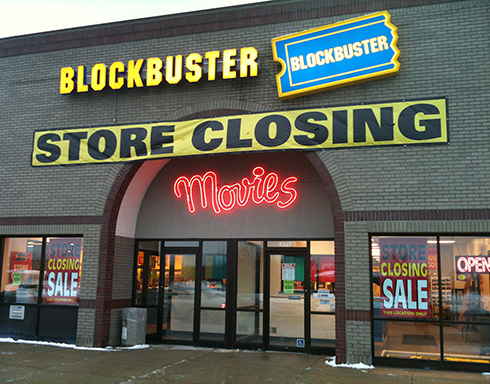
Although there are several lines of thought that could be pursued here (one of which might be to discuss the loss of jobs, especially to our students, as many of them work within retail)… some of the key questions that come to my mind are:
Also relevant/see:
Attention University Presidents: A Press Release From the Near Future — from futurist Jack Uldrich
(Emphasis added below by DSC)
(Editor’s Note: Change is difficult. This is especially true in organizations that have heretofore been immune to the broader forces of disruption–such as institutions of higher learning. To shake presidents, administrators, and faculty out of their stupor I have drafted the following fictional press release. I encourage all university and college presidents and their boards to read it and then discuss how they can–and must–adapt in order to remain competitive in the future.)
PRESS RELEASE (Fictional Scenario: For Internal Discussion Only)
(Note: All links in the press release highlight real advances in the field of higher education).
State College to Close at End of 2021-2022 Academic Year
Washington, DC – December 16, 2021 — State College, one of the country’s leading public universities, has decided to cease academic operations at the end of the 2021-22 school year.
rest of fictional press release here –>
Last comment from DSC:
I don’t post this to be a fear monger. Rather, I post it to have those of us working with higher education take some time to reflect on this situation — because we need to be far more responsive to change than we are being. Given the increasingly rapid pace of change occurring in our world today, people will have to continue to reinvent themselves. But the difference in the near future will be in the number of times people have to reinvent themselves and how quickly they need to do it. They won’t be able to take 2-4 years off to do it.
Let’s not get blown out of the water by some alternative. Let’s respond while we still have the chance. Let’s be in touch with the changing landscapes and needs out there.
Addendums:
Colleges need to adapt to meet the changing demographics and needs of students, rather than expect them to conform to a tradition-loving system.
“Unless we become more nimble in our approach and more scalable in our solutions, we will miss out on an opportunity to embrace and serve the majority of students who will need higher education and postsecondary learning,” says the report. Later it underscores that “higher education has never mattered so much to those who seek it. It drives social mobility, energizes our economy, and underpins our democracy.”
WHEN education fails to keep pace with technology, the result is inequality. Without the skills to stay useful as innovations arrive, workers suffer—and if enough of them fall behind, society starts to fall apart. That fundamental insight seized reformers in the Industrial Revolution, heralding state-funded universal schooling. Later, automation in factories and offices called forth a surge in college graduates. The combination of education and innovation, spread over decades, led to a remarkable flowering of prosperity.
Today robotics and artificial intelligence call for another education revolution. This time, however, working lives are so lengthy and so fast-changing that simply cramming more schooling in at the start is not enough. People must also be able to acquire new skills throughout their careers.
Amazon is going to kill more American jobs than China did — from marketwatch.com
Millions of retail jobs are threatened as Amazon’s share of online purchases keeps climbing

From DSC:
Don’t discount the game-changing power of the morphing “TV” when coupled with artificial intelligence (AI), natural language processing (NLP), and blockchain-based technologies!
When I saw the article below, I couldn’t help but wonder what (we currently know of as) “TVs” will morph into and what functionalities they will be able to provide to us in the not-too-distant future…?
For example, the article mentions that Seiki, Westinghouse, and Element will be offering TVs that can not only access Alexa — a personal assistant from Amazon which uses artificial intelligence — but will also be able to provide access to over 7,000 apps and games via the Amazon Fire TV Store.

Some of the questions that come to my mind:
Forget a streaming stick: These 4K TVs come with Amazon Fire TV inside — from techradar.com by Nick Pino
Excerpt:
The TVs will not only have access to Alexa via a microphone-equipped remote but, more importantly, will have access to the over 7,000 apps and games available on the Amazon Fire TV Store – a huge boon considering that most of these Smart TVs usually include, at max, a few dozen apps.

![The Living [Class] Room -- by Daniel Christian -- July 2012 -- a second device used in conjunction with a Smart/Connected TV](http://danielschristian.com/learning-ecosystems/wp-content/uploads/2012/07/The-Living-Class-Room-Daniel-S-Christian-July-2012.jpg)
Addendums
“I’ve been predicting that by 2030 the largest company on the internet is going to be an education-based company that we haven’t heard of yet,” Frey, the senior futurist at the DaVinci Institute think tank, tells Business Insider.
.
Virtual reality is actually here — from computerworld.in by Bart Perkins
Excerpts:
In parallel with gaming, VR is expanding into many other areas, including these:
VR and education: Why we shouldn’t wait to reap the benefits – from medium.com by Josh Maldonad
Excerpts:
However, we see very little experienced-based learning in all levels of education today. Traditional learning consists of little more than oration through lectures and textbooks (and their digital equivalents). Experience-based learning is often very difficult to facilitate in the classroom. Whether it be a field trip in elementary school, or simulation exercises in med school, it can be tedious, costly and time consuming.
…
Where VR is really winning in education is in subject matter retention. The first of several surveys that we’ve done was based on a VR field trip through the circulatory system with high-school age children. We saw an increase of nearly 80% in subject matter retention from a group that used VR, compared against a control group that was provided the same subject matter via text and image. (I’ll expand on the details of this experiment, and some research initiatives we’re working on in another blog post).
http://uploadvr.com/chinese-vr-education-study/
Example apps in healthcare:
Residential design and virtual reality: a better way to build a home? — from connectedlife.style
Excerpt:
The old phrase of ‘needing to see it to believe it’ is a powerful mantra across all aspects of residential design. Architecture, interior design and property development are all highly visual trades that require buy-in from both those working on the project and the client. As such, making sure everyone is sold on a coherent vision is vital to ensure that everything goes smoothly and no one is left dissatisfied when the project is completed.
Google Translate: Updated
For those travelers out there, you might want to know about Google Translate’s ability to read in an image of one language, and provide you with a translation of that language/signage/label/etc.
Also see:
From this page, here are some of the visual translation products:
Now HoloLens lets you check your mail in a wall-sized mixed reality version of Outlook — from pcworld.com by Ian Paul
Now you can check your email or make a calendar appointment without removing Microsoft’s augmented reality headset.
You now can pin multiple 2D apps in virtual space,
and Microsoft’s HoloLens will remember where they are.
VR in Education: What’s Already Happening in the Classroom — from arvrmagazine.com by Susanne Krause
“Engagement was off the charts” | Connecting to the world and creating new ones using virtual reality
Excerpt:
It’s a way for educators to bring their students to places that would be out of reach otherwise. Google Expeditions, the VR mode of Google Street View and Nearpod’s virtual field trips are among the most popular experiences teachers explore with their students. “Some of our students have never really left the bubbles of their own town”, says Jaime Donally, creator of the #ARVRinEDU chat on Twitter. “Virtual reality is a relatively inexpensive way to show them the world.”
How augmented reality is transforming building management — from ibm.com
IBM People for Smarter Cities presents “Dublin lab – Cognitive Buildings”
In the video below, a facilities manager is using a mobile device to scan a QR code on a wall, behind which is a critical piece of HVAC equipment. With one scan, we can view data on the asset’s performance and health, location data for the asset. This data is being pulled by the IoT Platform from the asset itself, TRIRIGA, and any other useful sources.
Excerpt:
But the best experiences, VR acolytes agree, are still yet to come. Resh Sidhu leads VR development for Framestore, the high-end visual effects house that won an Oscar for the movie Gravity, and has since expanded into creating VR content. With hardware finally delivering on its promise, she believes it is now up to creatives to explore the possibilities.
HTC Brings VR Center to Paris; Vive Exhibit at Nobel Museum — from vrscout.com by Jonathan Nafarrete
Excerpt:
HTC recently collaborated with TIME-LIFE on “Remembering Pearl Harbor,” a VR experience commemorating the 75th anniversary of the attack with exhibitions at the Intrepid Sea, Air and Space Museum in New York City and the Newsuem in Washington D.C. Last month, Vive also collaborated with the Royal Academy of Arts in London on the world’s first 3-D printed VR art exhibit.
Now HTC Vive has revealed the launch of a new VR center at La Geode, part of Paris’ Science and Industry Museum, as well as a partnership with the Nobel Museum for a first-of-its-kind VR exhibit showcasing the contributions of Nobel laureates.


